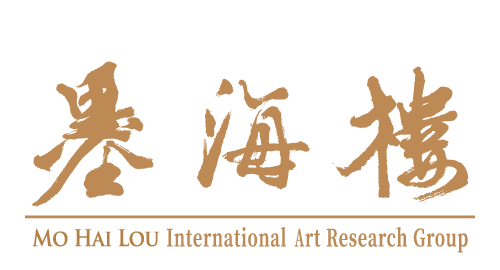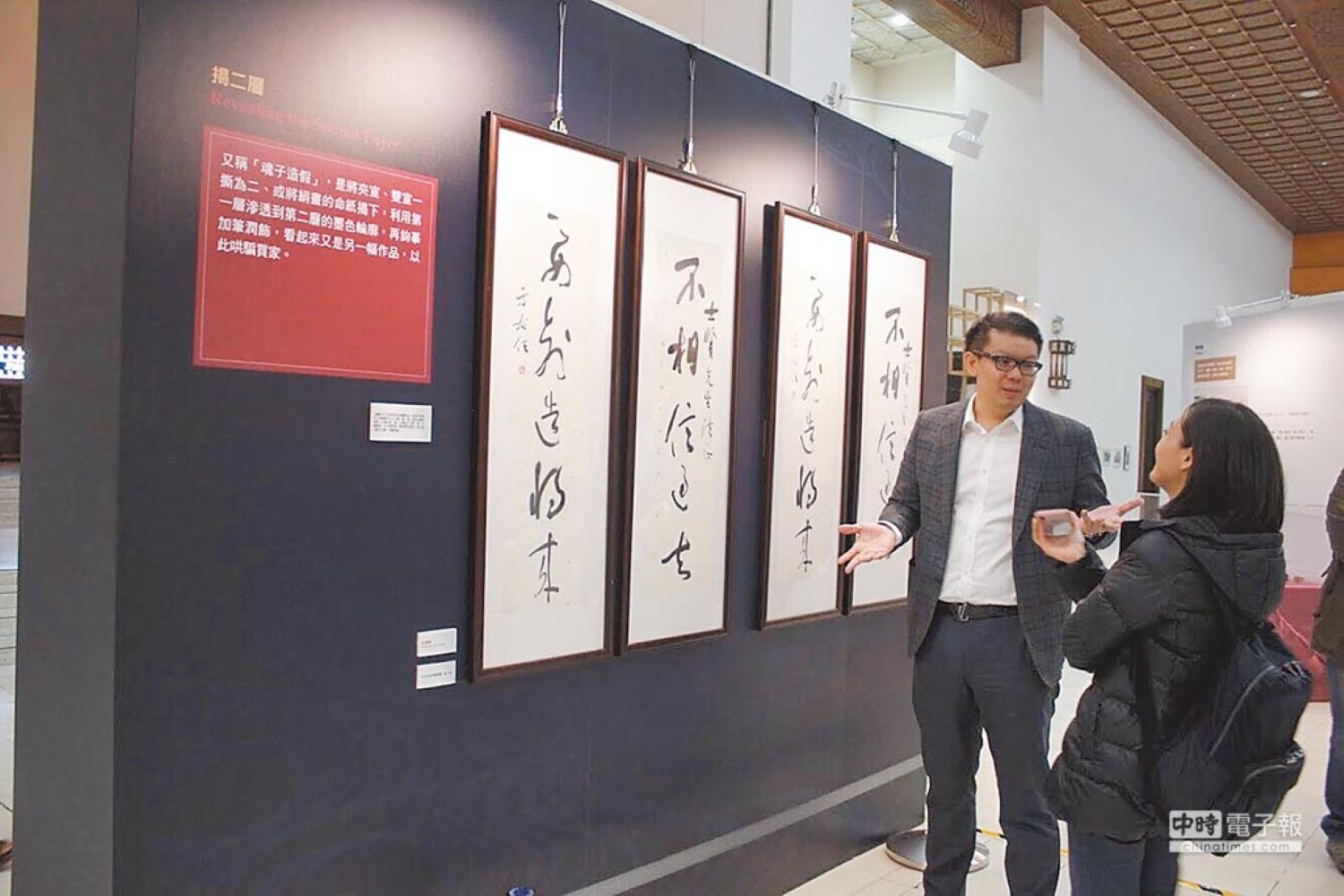First-Ever Public Art Connoisseurship Exhibition in the Chinese-speaking World – Expert Guidance Provided
▲Dr. Ye Guo-Shin (left), a renowed art connoisseur with multiple roles as an artist, appraiser, and auctioneer, from the London Metropolitan University, personally explained the authenticity of calligraphy and paintings to guests at the “Art Connoisseurship Exhibition.” Photo courtesy of the organizer.
【Reporter: Huang Zhimou】
As the Chinese art market continues to flourish, the techniques used in art forgery and fraud have become increasingly sophisticated and rampant. In response, the renowned Mo Hai Lou International Art Research Group, in collaboration with the first Chinese scholar to obtain a PhD in art authentication, Dr. Ye Guo-Shin, has meticulously curated the first-ever “Art Connoisseurship Exhibition” in the Chinese-speaking world. This groundbreaking exhibition is officially open at the Central Corridor of Chiang Kai-shek Memorial Hall and will run until May 12, offering a rare opportunity to reveal the secrets of art forgery.
An Inside Look at the Exhibition
According to the organizers, visitors will not only receive step-by-step guidance from experts on how to collect and analyze evidence to determine art authenticity, but they will also get to witness real-life cases showcasing advanced forgery techniques. The exhibition will demonstrate how counterfeiters can recreate multimillion-dollar artworks, often deceiving even the most seasoned collectors. One of the industry’s notorious techniques, known as “double-layer revelation”, allows forgeries to be extracted from originals, effectively duplicating artworks and doubling profits. Additionally, modern inkjet technology has revolutionized art forgery, offering low-cost, high-efficiency, and high-quality reproductions. However, under a microscope, the inkjet dots become undeniable proof of counterfeit production.
A Mission to Educate and Empower Collectors
Curator Dr. Ye Guo-Shin emphasizes that every art collector should possess fundamental authentication skills. Through this highly educational and public-benefit exhibition, he hopes to promote knowledge of art authentication, empowering individuals to become the “Sherlock Holmes” of the art collection world. Given that artworks have increasingly become a key asset class, supply struggles to meet demand. Many collectors have unknowingly preserved fake paintings as family heirlooms, only realizing the deception when they attempt to sell them—resulting in devastating financial losses.
Dr. Ye further explains that the exhibition will go beyond basic authentication, teaching visitors how to analyze artistic styles and conduct supplementary verification. The event features a rare collection of materials showcasing the evolution of famous artists’ styles, including paper types, seals, and other authentic samples. Notably, visitors will have the opportunity to see the original seal used by modern master Fu Baoshi, as well as the rare and special paper used by Taiwanese artist Chiang Chao-Shen. One of the highlights is a unique seal carved for Fu Baoshi by renowned seal engraving artist Wang Yi-Yu, making it a remarkable piece for art appreciation.
Test Your Eye for Authenticity!
A side-by-side comparison zone will challenge visitors to spot the real vs. fake artworks—a fun and interactive way to test their judgment. Art enthusiasts are encouraged to put their visual skills to the test and engage in this exciting exploration of authentic vs. counterfeit art.
Media Source : Commercial Times



